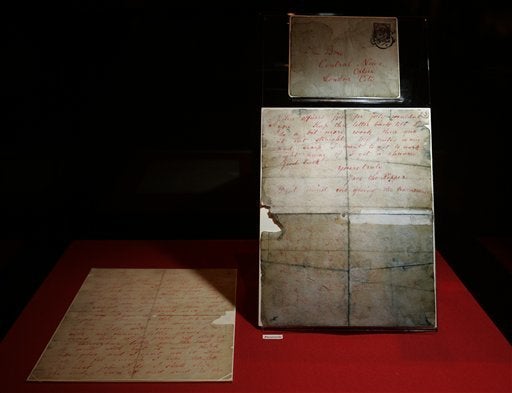We're all used to the basic Ripperologist stuff - the sad lives of the murdered alcoholic, destitute women, the gloating tone of the letters mocking the police, even the (possible) piece of kidney sent with one of those letters.
But reading a little closer, I contend that, in reality, we know almost nothing about these crimes, or their perpetrator. What we know about, instead, is what the newspapers and the entertainment industry of the time decided to make up in the absence of any hard information.
The great horror - and the great fascination - of this series of murders is that they are entirely unknowable. The date they began, or ended, is open to question; the number, and sometimes even the names, of the victims varies. There was no arrest, no trial, no verdict, only a shadowy figure and a list of suspects so all-encompassing it reads like a joke. (A couple of months after the first murder, one publication suggested that the murderer was, in turn, an army doctor with sunstroke, a mad occultist, anarchists of various beliefs - their convictions fluctuated with the date - a clergyman, a rogue policeman, and a "scientific humanitarian" on a mission to clean up the world by murdering prostitutes.)
Newspapers were initially slow to take note. The death of Martha Tabram, who may or may not have been murdered by the same person who killed the other five women, aroused little interest. The Daily News merely said it was a "supposed murder," which, given that she had been stabbed nearly 40 times, seems to stretch the meaning of "supposed" past breaking point.
But when Mary Ann, or Polly, Nichols, was found dead, the newspapers followed press magnate Arthur Harmsworth's dictate: "crime exclusives are noticed by the public more than any other sort of news. They attract attention, which is the secret of newspaper success." And from then onwards, the newspaper stories took off. Many local newspapers ran their presses around the clock, producing as many updated editions as they could - even thrilling updates like the Evening News, on 1 September: "on inquiry this morning at Scotland Yard, [we] were informed that no arrests had been made."

